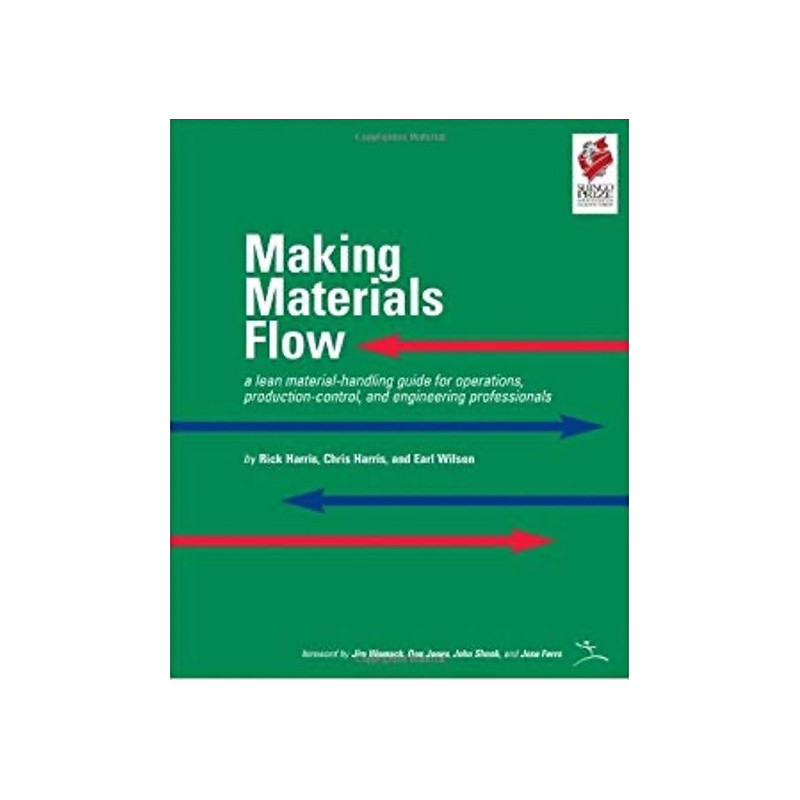




Security policy (edit with Customer reassurance module)

Delivery policy (edit with Customer reassurance module)

Return policy (edit with Customer reassurance module)
Rick Harris, Chris Harris and Earl Wilson
Foreword by Jim Womack, Dan Jones, John Shook and Jose Ferro
Winner of the 2005 Shingo Research Prize
MAKING MATERIALS FLOW describes in simple language another step in the implementation of a complete lean business system.
LEI's first book, LEARNING TO SEE, focused on where to start - on the value stream of each product family within your facility.
SEEING THE WHOLE then expanded the value stream map beyond the walls of the plant, from raw materials to the customer.
Once the waste and potential applications of flow and pull have been identified, you can now use the CREATING CONTINUOUS FLOW techniques to implement truly continuous flow in cell-based operations.
MAKING MATERIALS FLOW addresses the next step by explaining how to supply parts to the supply chain to support the continuous flow.
"Companies are making progress in creating continuous flow areas as more managers learn about value chain maps and continuous flow cells," said co-author Rick Harris, who also co-wrote the book CREATING LEVEL PULL. Both books have received Shingo Research Prizes.
During his visits to plants, Harris has noticed a disturbing trend. “As I walk through the facilities and examine serious efforts to create continuous flow, I see how difficult it is to maintain a constant output. Usually the problem is the lack of a lean material handling system for purchased parts that supports continuous flow cells, small batch processing, and traditional assembly lines. ”
MAKING MATERIALS FLOW explains in clear language how to create such a system, by applying the relevant concepts and methods in a step-by-step progression. The book reveals the exercises, formulas, standards, and forms that a consultant would use to implement the system in their environment. And, like other LEI books, MAKING MATERIALS FLOW answers the key question managers generally ask about manufacturing tools and concepts read, "What do I do on Monday morning to implement this?" The four key steps detailed in the book include:
Finally, you will learn how to continually maintain and improve the system by implementing periodic audits of the material handling system throughout the management chain, from the operator on the road to the plant manager. You will learn the five-step process to introduce audits to the market, routes, and “pull” signals by a multi-functional team from production control, operations, and industrial engineering.
Harris and co-authors Chris Harris and Earl Wilson will take you through 10 simple but pragmatic questions that show how a lean manufacturing plant implements a robust but flexible material handling system for purchased parts:
An appendix explores how to adapt key principles of lean material handling to more complex environments, such as incorporating work-in-process supermarket (WIP) into the system for purchased parts, adding sourcing routes from production cells to a grocery store. finished items, and apply the system to low volume, high mix processes.
MAKING MATERIALS FLOW will benefit lean leaders, managers, and executives in production control, operations, and engineering, who have at least a basic understanding of lean concepts such as value stream maps, cell design, and standardized work. The 93-page book contains more than 50 illustrations.
Data sheet
Specific References
You might also like